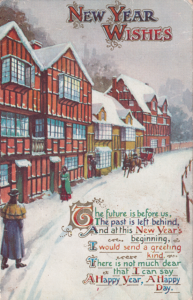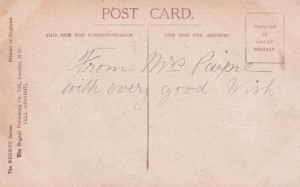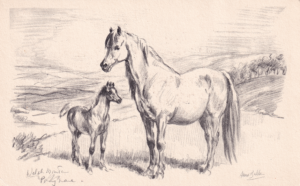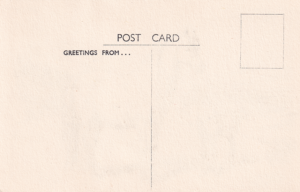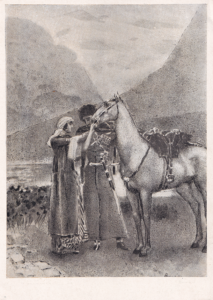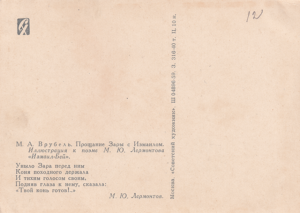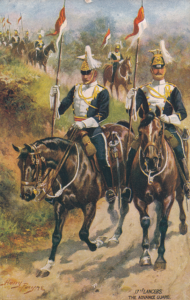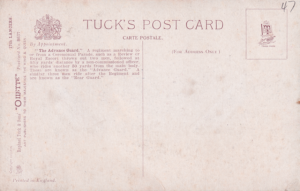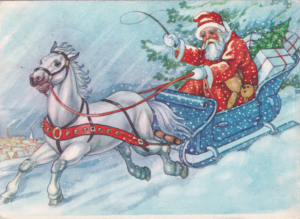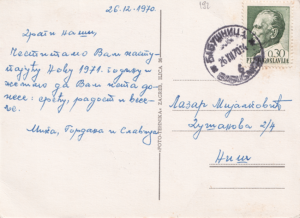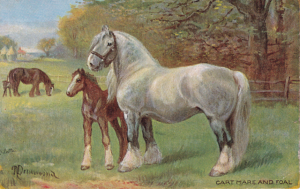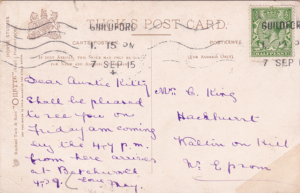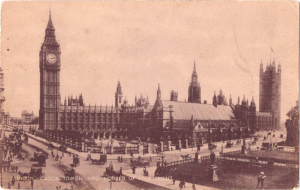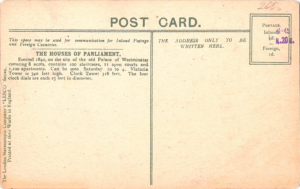Pit pony – coal mine horse.
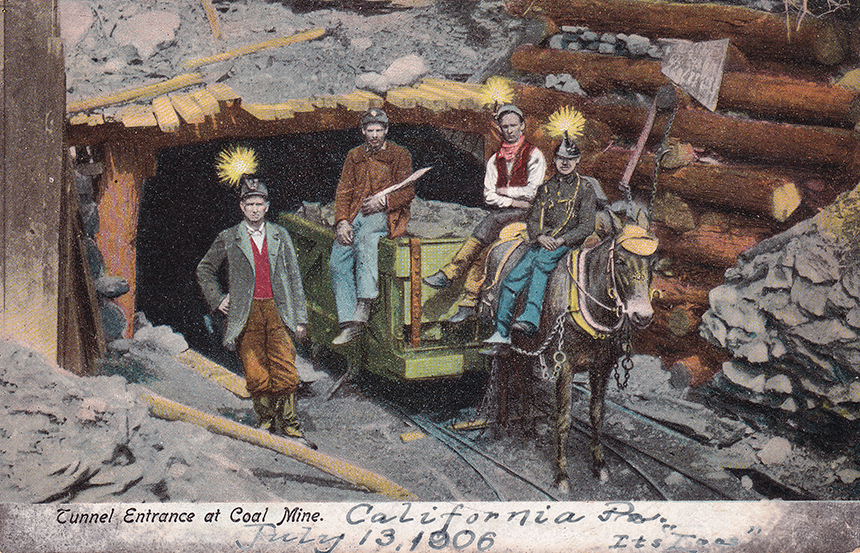

Reverse side of the postcard.
More information
Pit pony – coal mine horse.
A pit pony, otherwise known as a mining horse, was a horse, pony or mule commonly used underground in mines from the mid-18th until the mid-20th century. The term "pony" was sometimes broadly applied to any equine working underground.
Larger horses, such as varieties of Cleveland Bay, could be used on higher underground roadways, but on many duties small ponies no more than 12 hands (48 inches, 122 cm) high were needed. Shetlands were a breed commonly used because of their small size, but Welsh, Russian, Devonshire (Dartmoor) and Cornish ponies also saw extensive use in England.
In the interwar period, ponies were imported into Britain from the Faroe Islands, Iceland and the United States. Geldings and stallions only were used. Donkeys were also used in the late 19th century, and in the United States, large numbers of mules were used. Regardless of breed, typical mining ponies were low set, heavy bodied and heavy limbed with plenty of bone and substance, low-headed and sure-footed. Under the British Coal Mines Act of 1911, ponies had to be four years old and work ready (shod and vet checked) before going underground.
Founder
Co. New-York - Leipzig.
Date
1906.
Culture
USA.
Classification
Postcard.

